Foreign Editions Of My Books
Important notes:
- This list contains only those versions that I
have received personally. Check with your bookstore or the publisher's
representative in your country to see whether additional translations
are available.
- If you find a foreign translation not on this list, I'd like to know
about it.
Books in Chinese (Mainland)
-
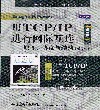 TCP/IP: Architecture, Protocols, and Applications,
5th edition.
TCP/IP: Architecture, Protocols, and Applications,
5th edition.
The classic reference in the field for anyone who wants to understand
Internet technology, Volume I surveys TCP/IP and describes each
component.
The highly accessible text presents the scientific principles used in
the construction of TCP/IP,
and shows how the components were designed to work together.
It covers details of each protocol, including ARP, RARP, IP, TCP, UDP,
RIP, DHCP, OSPF and others.
-
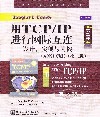 Internetworking With TCP/IP Volume II: Design, Implementation,
and Internals (with D. Stevens), Third ed, 1999.
Internetworking With TCP/IP Volume II: Design, Implementation,
and Internals (with D. Stevens), Third ed, 1999.
Ideal for implementers, Volume II continues the discussion of Volume I
by using code from a running implementation of TCP/IP to illustrate
all the details.
The text shows, for example, how TCP's slow start algorithm interacts
with the Partridge-Karn exponential retransmission backoff, and how
routing updates interact with datagram forwarding.
-
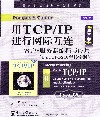 Internetworking With TCP/IP Volume III: Client-Server Programming
and Applications, Linux/POSIX Socket Version (with D. Stevens), 2000.
0-13-032071-4
Internetworking With TCP/IP Volume III: Client-Server Programming
and Applications, Linux/POSIX Socket Version (with D. Stevens), 2000.
0-13-032071-4
Volume III describes the fundamental concept of client-server
computing used to build all distributed computing systems. The text
discusses various server designs as well as the tools and techniques
used to build clients and servers, including Remote Procedure Call
(RPC). It contains examples of running programs that illustrate each
of the designs and tools. Four versions of Volume III are available.
This version describes the Socket Application Program Interface
(API) available under the Linux Operating System, which follows the
POSIX standard. All the example code in the text has been compiled
and tested under Linux.
-
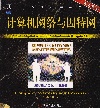 Computer Networks And Internets, 5th edition, 2010.
Computer Networks And Internets, 5th edition, 2010.
A broad introduction to networking and internetworking. After an
introduction that explores Internet growth and trends, the text
is divided into five parts that explore: Internet applications
and programming, data communications, packet switching with wired
and wireless network technologies that includes both local-area
and wide-area networks, Internetworking and the TCP/IP protocols
used in the Internet. The final section explores aspects of networking
that cross multiple layers and technologies, including security and
network management. The text covers a wide range of topics, including
bridging, switching, routing and routing protocols, multimedia protocols
and IP telephony, and Web browsing. The text includes a CD-ROM with
a network simulator that allows students to explore properties of
protocols without requiring expensive network analyzers or other lab
equipment.
The Fifth Edition represents a dramatic reorganization and complete update
that responds to suggestions from professors and students. The edition
contains several new chapters and updates all the material to use more
recent technologies in examples. In addition, a set of animations and
exercises, known as CONIC, is available for download at no cost from
http://www.tetcos.com/downloadconic.php.
The CONIC exercises supplement Chapter 21 on IP addressing.
-
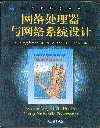 Network Systems Design Using Network Processors, 2004.
Network Systems Design Using Network Processors, 2004.
An introduction to network processors and their use in network
systems such as switches, bridges, routers, and load balancers.
In addition to discussing the motivation, architecture, and use
of network processors, the text considers protocol processing tasks,
and explains how such tasks can be implemented in software or
hardware. It covers key concepts such as classification, switching
fabrics, processor and memory hierarchies, and programming languages
used with network processors. In addition, the text discusses the
use of parallelism and pipelining, issues of scale, and the design
tradeoffs that underlie network processors. The final section of the
text presents details of one network processor (the Intel IXP1200),
and shows example code for both the embedded processor and packet
processors that are part of the Intel chip.
-
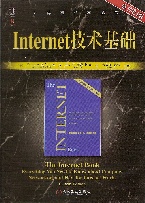 The Internet Book: Everything you need to know about computer
networking and how the Internet works, Paperback,
4th Edition 2008. ISBN 978-7-111-23789-1
The Internet Book: Everything you need to know about computer
networking and how the Internet works, Paperback,
4th Edition 2008. ISBN 978-7-111-23789-1
A gentle introduction to networking and the Internet, The Internet
Book does not assume the reader has a technical background.
It explains the Internet, how it works, and services available in
general terms, without focusing on a particular computer or a
particular brand of software.
Ideal for someone who wants to become Internet and computer networking
literate, The Internet Book explains the terminology as well as the
concepts; an extensive glossary of terms and abbreviations is
included.
-
 The Internet Book: Everything you need to know about computer
networking and how the Internet works, Paperback,
3rd Edition 2000, in English.
The Internet Book: Everything you need to know about computer
networking and how the Internet works, Paperback,
3rd Edition 2000, in English.
A gentle introduction to networking and the Internet, The Internet
Book does not assume the reader has a technical background.
It explains the Internet, how it works, and services available in
general terms, without focusing on a particular computer or a
particular brand of software.
Ideal for someone who wants to become Internet and computer networking
literate, The Internet Book explains the terminology as well as the
concepts; an extensive glossary of terms and abbreviations is
included.
-
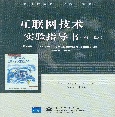 Hands-on Networking with Internet Applications, (Web site by David Laverell),
Second edition, 2004.
Hands-on Networking with Internet Applications, (Web site by David Laverell),
Second edition, 2004.
A description of several networking testbed facilities and a list of
projects that can be conducted using each of the facilities. Designed
as companion to a book such as Computer Networks And Internets, this
text guides the reader through a series of experimental projects that
show how networking concepts translate into practice.
This book is ideal as a laboratory guide for a course in networking.
It covers a broad range of experiments, and shows how any hardware
(including a single computer) can be used to learn about networking.
The writeup serves as a record of progress because a student can
check off each step as completed.
Books in Chinese (Taiwan)
-
 Internetworking With TCP/IP Volume 1: Principles
Protocols, and Architecture.
Internetworking With TCP/IP Volume 1: Principles
Protocols, and Architecture.
The classic reference in the field for anyone who wants to understand
Internet technology, Volume I surveys TCP/IP and describes each
component.
The highly accessible text presents the scientific principles used in
the construction of TCP/IP,
and shows how the components were designed to work together.
It covers details of each protocol, including ARP, IP, TCP, UDP,
RIP, DHCP, OSPF and others.
-
 Internetworking With TCP/IP Volume II: Design, Implementation,
and Internals (with D. Stevens).
Internetworking With TCP/IP Volume II: Design, Implementation,
and Internals (with D. Stevens).
Ideal for implementers, Volume II continues the discussion of Volume I
by using code from a running implementation of TCP/IP to illustrate
all the details.
The text shows, for example, how TCP's slow start algorithm interacts
with the Partridge-Karn exponential retransmission backoff, and how
routing updates interact with datagram forwarding.
-
 Internetworking With TCP/IP Volume III: Client-Server Programming
and Applications, BSD Socket Version (with D. Stevens).
Internetworking With TCP/IP Volume III: Client-Server Programming
and Applications, BSD Socket Version (with D. Stevens).
Volume III describes the fundamental concept of client-server
computing used to build all distributed computing systems. The text
discusses various server designs as well as the tools and techniques
used to build clients and servers, including Remote Procedure Call
(RPC). It contains examples of running programs that illustrate each
of the designs and tools. Two versions of Volume III are available.
The socket version describes the Socket Application Program Interface
(API) derived from Berkeley UNIX, from which the Windows Sockets
standard has been derived.
-
 Internetworking With TCP/IP Volume III: Client-Server Programming
and Applications, Windows Sockets version (with D. Stevens).
Internetworking With TCP/IP Volume III: Client-Server Programming
and Applications, Windows Sockets version (with D. Stevens).
Volume III describes the fundamental concept of client-server
computing used to build all distributed computing systems. The text
discusses various server designs as well as the tools and techniques
used to build clients and servers, including Remote Procedure Call
(RPC). It contains examples of running programs that illustrate each
of the designs and tools. Two versions of Volume III are available.
The Windows Sockets version describes the Application Program Interface
(API) available under Microsoft Windows operating systems.
-
 Computer Networks And Internets, Fourth edition, 2004 (CD-ROM by Ralph Droms)
Computer Networks And Internets, Fourth edition, 2004 (CD-ROM by Ralph Droms)
A broad introduction networking and internetworking. After a quick
introduction that introduces network applications, the text
begins at the lowest level by explaining data transmission,
including a description of how modems work. The second section focuses
on packet switching: it covers local and wide are technologies, the
wiring schemes used for popular networks, and bridging. The third
section discusses internetworking: it explains the TCP/IP protocols
used in the Internet. The final section explores network applications:
it explains the client-server model and discusses popular applications
such as IP telephony and Web browsing. The text includes a CD-ROM
by Ralph Droms as well as a Web site that is updated continuously.
The Fourth Edition has been completely updated, and contains new chapters on
IP telephony, User Datagram Protocol, and Network Address Translation.
-
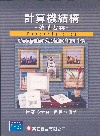 Essentials Of Computer Architecture, 2005.
Essentials Of Computer Architecture, 2005.
An introduction to computer organization that emphasizes
concepts and consequences for programmers instead of low-level
electrical engineering details.
The text is especially helpful to programmers who want to
understand how hardware operates and why programs behave as
they do.
Books in Dutch
-
 Computer Networks And Internets, 1998. (CD-ROM by Ralph Droms)
ISBN 90-395-0586-1
Computer Networks And Internets, 1998. (CD-ROM by Ralph Droms)
ISBN 90-395-0586-1
A broad introduction networking and internetworking. The first
section begins at the lowest level by explaining data transmission,
including a description of how modems work. The second section focuses
on packet switching: it covers local and wide are technologies, the
wiring schemes used for popular networks, and bridging. The third
section discusses internetworking: it explains the TCP/IP protocols
used in the Internet. The final section explores network applications:
it explains the client-server model and discusses popular applications
such as file transfer and Web browsing. The text includes a CD-ROM
by Ralph Droms as well as a Web site that is updated continuously.
Books in Farsi
-
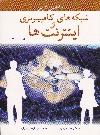 Computer Networks And Internets
Fifth Edition, 2012.
Computer Networks And Internets
Fifth Edition, 2012.
A broad introduction to networking and internetworking. After an
introduction that explores Internet growth and trends, the text
is divided into five parts that explore: Internet applications
and programming, data communications, packet switching with wired
and wireless network technologies that includes both local-area
and wide-area networks, Internetworking and the TCP/IP protocols
used in the Internet. The final section explores aspects of networking
that cross multiple layers and technologies, including security and
network management. The text covers a wide range of topics, including
bridging, switching, routing and routing protocols, multimedia protocols
and IP telephony, and Web browsing. The text includes a CD-ROM with
a network simulator that allows students to explore properties of
protocols without requiring expensive network analyzers or other lab
equipment.
The Fifth Edition represents a dramatic reorganization and complete update
that responds to suggestions from professors and students. The edition
contains several new chapters and updates all the material to use more
recent technologies in examples.
-
 TCP/IP:Internetworking With TCP/IP Volume 1: Principles
Protocols, and Architecture.
TCP/IP:Internetworking With TCP/IP Volume 1: Principles
Protocols, and Architecture.
The classic reference in the field for anyone who wants to understand
Internet technology, Volume I surveys TCP/IP and describes each
component.
The highly accessible text presents the scientific principles used in
the construction of TCP/IP,
and shows how the components were designed to work together.
It covers details of each protocol, including ARP, RARP, IP, TCP, UDP,
RIP, DHCP, OSPF and others.
Books in Finnish
-
 TCP/IP: Architecture, Protocols, and Applications.
TCP/IP: Architecture, Protocols, and Applications.
The classic reference in the field for anyone who wants to understand
Internet technology, Volume I surveys TCP/IP and describes each
component.
The highly accessible text presents the scientific principles used in
the construction of TCP/IP,
and shows how the components were designed to work together.
It covers details of each protocol, including ARP, RARP, IP, TCP, UDP,
RIP, DHCP, OSPF and others. The fourth edition also covers technologies
such as Virtual Private Networks (VPNs) and Network Address Translation
(NAT).
Books in French
-
 TCP/IP: Architecture, Protocols, and Applications.
TCP/IP: Architecture, Protocols, and Applications.
The classic reference in the field for anyone who wants to understand
Internet technology, Volume I surveys TCP/IP and describes each
component.
The highly accessible text presents the scientific principles used in
the construction of TCP/IP,
and shows how the components were designed to work together.
It covers details of each protocol, including ARP, RARP, IP, TCP, UDP,
RIP, DHCP, OSPF and others. The fourth edition also covers technologies
such as Virtual Private Networks (VPNs) and Network Address Translation
(NAT).
-
 Reseaux Et Internet (Computer Networks And Internets), 2000.
Reseaux Et Internet (Computer Networks And Internets), 2000.
A broad introduction networking and internetworking. The first
section begins at the lowest level by explaining data transmission,
including a description of how modems work. The second section focuses
on packet switching: it covers local and wide are technologies, the
wiring schemes used for popular networks, and bridging. The third
section discusses internetworking: it explains the TCP/IP protocols
used in the Internet. The final section explores network applications:
it explains the client-server model and discusses popular applications
such as file transfer and Web browsing. A Web site accompanies the
text that is updated continuously.
-
 TCP/IP: Architecture, Protocols, Applications. International Edition
TCP/IP: Architecture, Protocols, Applications. International Edition
The classic reference in the field for anyone who wants to understand
Internet technology, Volume I surveys TCP/IP and describes each
component.
The highly accessible text presents the scientific principles used in
the construction of TCP/IP,
and shows how the components were designed to work together.
It covers details of each protocol, including ARP, RARP, IP, TCP, UDP,
RIP, DHCP, OSPF and others.
Books in German
-
 Internetworking With TCP/IP Volume 1: Principles
Protocols, and Architecture, 5th edition, 2006.
Internetworking With TCP/IP Volume 1: Principles
Protocols, and Architecture, 5th edition, 2006.
The classic reference in the field for anyone who wants to understand
Internet technology, Volume I surveys TCP/IP and describes each
component.
The highly accessible text presents the scientific principles used in
the construction of TCP/IP,
and shows how the components were designed to work together.
It covers details of each protocol, including ARP, RARP, IP, TCP, UDP,
RIP, DHCP, OSPF and others. It also covers technologies such as
Virtual Private Networks (VPNs) and Network Address Translation (NAT).
-
 Computer Networks And Internets, 1998. (CD-ROM by Ralph Droms)
Computer Networks And Internets, 1998. (CD-ROM by Ralph Droms)
A broad introduction networking and internetworking. The first
section begins at the lowest level by explaining data transmission,
including a description of how modems work. The second section focuses
on packet switching: it covers local and wide are technologies, the
wiring schemes used for popular networks, and bridging. The third
section discusses internetworking: it explains the TCP/IP protocols
used in the Internet. The final section explores network applications:
it explains the client-server model and discusses popular applications
such as file transfer and Web browsing. The text includes a CD-ROM
by Ralph Droms as well as a Web site that is updated continuously.
Books in Italian
-
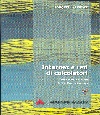 Computer Networks And Internets, 3rd edition, 2003. (CD-ROM by Ralph Droms)
Computer Networks And Internets, 3rd edition, 2003. (CD-ROM by Ralph Droms)
A broad introduction networking and internetworking. The first
section begins at the lowest level by explaining data transmission,
including a description of how modems work. The second section focuses
on packet switching: it covers local and wide are technologies, the
wiring schemes used for popular networks, and bridging. The third
section discusses internetworking: it explains the TCP/IP protocols
used in the Internet. The final section explores network applications:
it explains the client-server model and discusses popular applications
such as file transfer and Web browsing. The text includes a CD-ROM
by Ralph Droms as well as a Web site that is updated continuously.
-
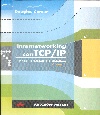 Internetworking With TCP/IP Volume 1: Principles
Protocols, and Architecture.
Internetworking With TCP/IP Volume 1: Principles
Protocols, and Architecture.
The classic reference in the field for anyone who wants to understand
Internet technology, Volume I surveys TCP/IP and describes each
component.
The highly accessible text presents the scientific principles used in
the construction of TCP/IP,
and shows how the components were designed to work together.
It covers details of each protocol, including ARP, RARP, IP, TCP, UDP,
RIP, DHCP, OSPF and others.
-
 Operating System Design - The XINU Approach.
Operating System Design - The XINU Approach.
An introduction to the design of process-based computer
operating systems. The text reviews basic components and
shows how they can be organized into a hierarchical design.
The code from a working operating system is used to illustrate
the principles.
Books in Japanese
-
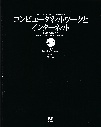 Computer Networks And Internets, 2016.
Computer Networks And Internets, 2016.
A broad introduction to networking and internetworking. After an
introduction that explores Internet growth and trends, the text
is divided into five parts that explore: Internet applications
and programming, data communications, packet switching with wired
and wireless network technologies that includes both local-area
and wide-area networks, Internetworking and the TCP/IP protocols
used in the Internet. The final section explores aspects of networking
that cross multiple layers and technologies, including security and
network management. The text covers a wide range of topics, including
bridging, switching, routing and routing protocols, multimedia protocols
and IP telephony, and Web browsing.
The Sixth Edition responds to suggestions from professors and students
as well as changes in technologies. The edition includes two new chapters
and updates all other chapters. A chapter on Software Defined Networking
explains the general concept and introduces OpenFlow. A chapter on the
Internet of Things explains wireless mesh networking and the ZigBee IP
protocols used for sensors in smart grid applications.
-
 Essentials Of Computer Architecture, 2005.
Essentials Of Computer Architecture, 2005.
An introduction to computer organization that emphasizes
concepts and consequences for programmers instead of low-level
electrical engineering details.
The text is especially helpful to programmers who want to
understand how hardware operates and why programs behave as
they do.
-
 Internetworking With TCP/IP Volume I: Principles, Protocols, and
Architecture, 4th edition
Internetworking With TCP/IP Volume I: Principles, Protocols, and
Architecture, 4th edition
The classic reference in the field for anyone who wants to understand
Internet technology, Volume I surveys TCP/IP and describes each
component.
The highly accessible text presents the scientific principles used in
the construction of TCP/IP,
and shows how the components were designed to work together.
It covers details of each protocol, including ARP, RARP, IP, TCP, UDP,
RIP, DHCP, OSPF and others.
-
 Internetworking With TCP/IP Volume II: Design, Implementation,
and Internals (with D. Stevens).
Internetworking With TCP/IP Volume II: Design, Implementation,
and Internals (with D. Stevens).
Ideal for implementers, Volume II continues the discussion of Volume I
by using code from a running implementation of TCP/IP to illustrate
all the details.
The text shows, for example, how TCP's slow start algorithm interacts
with the Partridge-Karn exponential retransmission backoff, and how
routing updates interact with datagram forwarding.
-
 Internetworking With TCP/IP Volume III: Client-Server Programming and
Applications, Window Sockets Version (with D. Stevens), 1997.
Internetworking With TCP/IP Volume III: Client-Server Programming and
Applications, Window Sockets Version (with D. Stevens), 1997.
Volume III describes the fundamental concept of client-server
computing used to build all distributed computing systems. The text
discusses various server designs as well as the tools and techniques
used to build clients and servers, including Remote Procedure Call
(RPC). It contains examples of running programs that illustrate each
of the designs and tools. Three versions of Volume III are available.
This version describes the Win32 programming interface and the Windows
Sockets API used with Windows 95 and Windows NT.
-
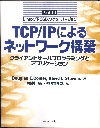 Internetworking With TCP/IP Volume III: Client-Server Programming
and Applications, Linux/POSIX Socket Version (with D. Stevens), 2004.
Internetworking With TCP/IP Volume III: Client-Server Programming
and Applications, Linux/POSIX Socket Version (with D. Stevens), 2004.
Volume III describes the fundamental concept of client-server
computing used to build all distributed computing systems. The text
discusses various server designs as well as the tools and techniques
used to build clients and servers, including Remote Procedure Call
(RPC). It contains examples of running programs that illustrate each
of the designs and tools. Four versions of Volume III are available.
This version describes the Socket Application Program Interface
(API) available under the Linux Operating System, which follows the
POSIX standard. All the example code in the text has been compiled
and tested under Linux.
-
 The Internet Book: Everything you need to know about computer
networking and how the Internet works, Paperback, 1996.
The Internet Book: Everything you need to know about computer
networking and how the Internet works, Paperback, 1996.
A gentle introduction to networking and the Internet, The Internet
Book does not assume the reader has a technical background.
It explains the Internet, how it works, and services available in
general terms, without focusing on a particular computer or a
particular brand of software.
Ideal for someone who wants to become Internet and computer networking
literate, The Internet Book explains the terminology as well as the
concepts; an extensive glossary of terms and abbreviations is
included.
-
 Operating System Design - The XINU Approach.
Operating System Design - The XINU Approach.
An introduction to the design of process-based computer
operating systems. The text reviews basic components and
shows how they can be organized into a hierarchical design.
The code from a working operating system is used to illustrate
the principles.
Books in Korean
-
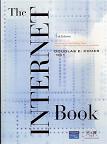 The Internet Book: Everything you need to know about computer
networking and how the Internet works, Paperback,
4th Edition 2008, in English.
The Internet Book: Everything you need to know about computer
networking and how the Internet works, Paperback,
4th Edition 2008, in English.
A gentle introduction to networking and the Internet, The Internet
Book does not assume the reader has a technical background.
It explains the Internet, how it works, and services available in
general terms, without focusing on a particular computer or a
particular brand of software.
Ideal for someone who wants to become Internet and computer networking
literate, The Internet Book explains the terminology as well as the
concepts; an extensive glossary of terms and abbreviations is
included.
-
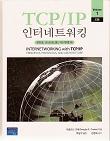 TCP/IP:Internetworking With TCP/IP Volume 1: Principles
Protocols, and Architecture. Fifth Edition, 2006
TCP/IP:Internetworking With TCP/IP Volume 1: Principles
Protocols, and Architecture. Fifth Edition, 2006
The classic reference in the field for anyone who wants to understand
Internet technology, Volume I surveys TCP/IP and describes each
component. The highly accessible text presents the scientific principles
used in the construction of TCP/IP, and shows how the components
were designed to work together.
It covers details of each protocol, including ARP, RARP, IP,
TCP, UDP, RIP, DHCP, OSPF and others.
Books in Polish
-
 TCP/IP:Internetworking With TCP/IP Volume 1: Principles
Protocols, and Architecture.
TCP/IP:Internetworking With TCP/IP Volume 1: Principles
Protocols, and Architecture.
The classic reference in the field for anyone who wants to understand
Internet technology, Volume I surveys TCP/IP and describes each
component.
The highly accessible text presents the scientific principles used in
the construction of TCP/IP,
and shows how the components were designed to work together.
It covers details of each protocol, including ARP, RARP, IP, TCP, UDP,
RIP, DHCP, OSPF and others.
-
 Internetworking With TCP/IP Volume II: Design, Implementation,
and Internals (with D. Stevens).
Internetworking With TCP/IP Volume II: Design, Implementation,
and Internals (with D. Stevens).
Ideal for implementers, Volume II continues the discussion of Volume I
by using code from a running implementation of TCP/IP to illustrate
all the details.
The text shows, for example, how TCP's slow start algorithm interacts
with the Partridge-Karn exponential retransmission backoff, and how
routing updates interact with datagram forwarding.
-
 Internetworking With TCP/IP Volume III: Client-Server Programming and
Applications, Window Sockets Version (with D. Stevens), 1997.
Internetworking With TCP/IP Volume III: Client-Server Programming and
Applications, Window Sockets Version (with D. Stevens), 1997.
Volume III describes the fundamental concept of client-server
computing used to build all distributed computing systems. The text
discusses various server designs as well as the tools and techniques
used to build clients and servers, including Remote Procedure Call
(RPC). It contains examples of running programs that illustrate each
of the designs and tools. Three versions of Volume III are available.
This version describes the Win32 programming interface and the Windows
Sockets API used with Windows 95 and Windows NT.
-
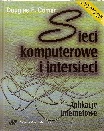 Computer Networks And Internets, 2003.
Computer Networks And Internets, 2003.
A broad introduction networking and internetworking. The first
section begins at the lowest level by explaining data transmission,
including a description of how modems work. The second section focuses
on packet switching: it covers local and wide are technologies, the
wiring schemes used for popular networks, and bridging. The third
section discusses internetworking: it explains the TCP/IP protocols
used in the Internet. The final section explores network applications:
it explains the client-server model and discusses popular applications
such as file transfer and Web browsing. The text includes a Web site
that is updated continuously.
The edition contains chapters on leased line and local loop
technologies, as well as middleware.
Books in Portuguese
-
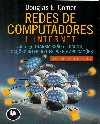 Computer Networks And Internets, (CD-ROM by Ralph Droms),
Computer Networks And Internets, (CD-ROM by Ralph Droms),
A broad introduction networking and internetworking. After a quick
introduction that introduces network applications, the text
begins at the lowest level by explaining data transmission,
including a description of how modems work. The second section focuses
on packet switching: it covers local and wide are technologies, the
wiring schemes used for popular networks, and bridging. The third
section discusses internetworking: it explains the TCP/IP protocols
used in the Internet. The final section explores network applications:
it explains the client-server model and discusses popular applications
such as IP telephony and Web browsing. The text includes a CD-ROM
by Ralph Droms as well as a Web site that is updated continuously.
The Fourth Edition has been completely updated, and contains new
chapters on
IP telephony, User Datagram Protocol, and Network Address Translation.
-
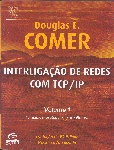 Internetworking With TCP/IP Volume 1: Principles
Protocols, and Architecture.
Internetworking With TCP/IP Volume 1: Principles
Protocols, and Architecture.
The classic reference in the field for anyone who wants to understand
Internet technology, Volume I surveys TCP/IP and describes each
component.
The highly accessible text presents the scientific principles used in
the construction of TCP/IP,
and shows how the components were designed to work together.
It covers details of each protocol, including ARP, IP, TCP, UDP,
RIP, DHCP, OSPF and others.
-
 Internetworking With TCP/IP Volume II: Design, Implementation,
and Internals (with D. Stevens).
Internetworking With TCP/IP Volume II: Design, Implementation,
and Internals (with D. Stevens).
Ideal for implementers, Volume II continues the discussion of Volume I
by using code from a running implementation of TCP/IP to illustrate
all the details.
The text shows, for example, how TCP's slow start algorithm interacts
with the Partridge-Karn exponential retransmission backoff, and how
routing updates interact with datagram forwarding.
-
 Operating System Design - The XINU Approach.
Operating System Design - The XINU Approach.
An introduction to the design of process-based computer
operating systems. The text reviews basic components and
shows how they can be organized into a hierarchical design.
The code from a working operating system is used to illustrate
the principles.
Books in Russian
-
 Computer Networks And Internets, 2000. (CD-ROM by Ralph Droms)
Computer Networks And Internets, 2000. (CD-ROM by Ralph Droms)
A broad introduction networking and internetworking. The first
section begins at the lowest level by explaining data transmission,
including a description of how modems work. The second section focuses
on packet switching: it covers local and wide are technologies, the
wiring schemes used for popular networks, and bridging. The third
section discusses internetworking: it explains the TCP/IP protocols
used in the Internet. The final section explores network applications:
it explains the client-server model and discusses popular applications
such as file transfer and Web browsing. The text includes a CD-ROM
by Ralph Droms as well as a Web site that is updated continuously.
-
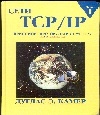 Internetworking With TCP/IP Volume 1: Principles
Protocols, and Architecture, fourth edition, 2003.
Internetworking With TCP/IP Volume 1: Principles
Protocols, and Architecture, fourth edition, 2003.
The classic reference in the field for anyone who wants to understand
Internet technology, Volume I surveys TCP/IP and describes each
component.
The highly accessible text presents the scientific principles used in
the construction of TCP/IP,
and shows how the components were designed to work together.
It covers details of each protocol, including ARP, RARP, IP, TCP, UDP,
RIP, DHCP, OSPF and others.
-
 Internetworking With TCP/IP Volume III: Client-Server Programming
and Applications, Linux/POSIX Socket Version (with D. Stevens), 2000.
Internetworking With TCP/IP Volume III: Client-Server Programming
and Applications, Linux/POSIX Socket Version (with D. Stevens), 2000.
Volume III describes the fundamental concept of client-server
computing used to build all distributed computing systems. The text
discusses various server designs as well as the tools and techniques
used to build clients and servers, including Remote Procedure Call
(RPC). It contains examples of running programs that illustrate each
of the designs and tools. Four versions of Volume III are available.
This version describes the Socket Application Program Interface
(API) available under the Linux Operating System, which follows the
POSIX standard. All the example code in the text has been compiled
and tested under Linux.
-
 The Internet Book: Everything you need to know about computer
networking and how the Internet works, 2002.
The Internet Book: Everything you need to know about computer
networking and how the Internet works, 2002.
A gentle introduction to networking and the Internet, The Internet
Book does not assume the reader has a technical background.
It explains the Internet, how it works, and services available in
general terms, without focusing on a particular computer or a
particular brand of software.
Ideal for someone who wants to become Internet and computer networking
literate, The Internet Book explains the terminology as well as the
concepts; an extensive glossary of terms and abbreviations is
included.
Books in Spanish
-
 Internetworking With TCP/IP Volume 1: Principles
Protocols, and Architecture.
Internetworking With TCP/IP Volume 1: Principles
Protocols, and Architecture.
The classic reference in the field for anyone who wants to understand
Internet technology, Volume I surveys TCP/IP and describes each
component.
The highly accessible text presents the scientific principles used in
the construction of TCP/IP,
and shows how the components were designed to work together.
It covers details of each protocol, including ARP, RARP, IP, TCP, UDP,
RIP, DHCP, OSPF and others.
-
 Internetworking With TCP/IP Volume 2: Design, implementation
And Internals (with D. Stevens), Third ed, 1999.
Internetworking With TCP/IP Volume 2: Design, implementation
And Internals (with D. Stevens), Third ed, 1999.
Ideal for implementers, Volume II continues the discussion of Volume I
by using code from a running implementation of TCP/IP to illustrate
all the details.
The text shows, for example, how TCP's slow start algorithm interacts
with the Partridge-Karn exponential retransmission backoff, and how
routing updates interact with datagram forwarding.
-
 The Internet Book, 1999.
ISBN 970-17-0232-8.
The Internet Book, 1999.
ISBN 970-17-0232-8.
A gentle introduction to networking and the Internet, The Internet
Book does not assume the reader has a technical background.
It explains the Internet, how it works, and services available in
general terms, without focusing on a particular computer or a
particular brand of software.
Ideal for someone who wants to become Internet and computer networking
literate, The Internet Book explains the terminology as well as the
concepts; an extensive glossary of terms and abbreviations is
included.
-
 Computer Networks And Internets, 1996. (CD-ROM by Ralph Droms)
ISBN 970-17-0021-X.
Computer Networks And Internets, 1996. (CD-ROM by Ralph Droms)
ISBN 970-17-0021-X.
A broad introduction networking and internetworking. The first
section begins at the lowest level by explaining data transmission,
including a description of how modems work. The second section focuses
on packet switching: it covers local and wide are technologies, the
wiring schemes used for popular networks, and bridging. The third
section discusses internetworking: it explains the TCP/IP protocols
used in the Internet. The final section explores network applications:
it explains the client-server model and discusses popular applications
such as file transfer and Web browsing. The text includes a CD-ROM
by Ralph Droms as well as a Web site that is updated continuously.
International Editions in English
-
 Internetworking With TCP/IP Volume 1: Principles
Protocols, and Architecture, 4th edition, 2000.
ISBN 0-13-019353-4
Internetworking With TCP/IP Volume 1: Principles
Protocols, and Architecture, 4th edition, 2000.
ISBN 0-13-019353-4
The classic reference in the field for anyone who wants to understand
Internet technology, Volume I surveys TCP/IP and describes each
component.
The highly accessible text presents the scientific principles used in
the construction of TCP/IP,
and shows how the components were designed to work together.
It covers details of each protocol, including ARP, RARP, IP, TCP, UDP,
RIP, DHCP, OSPF and others. It also covers technologies such as
Virtual Private Networks (VPNs) and Network Address Translation (NAT).
-
 Internetworking With TCP/IP Volume II: Design, Implementation,
and Internals (with D. Stevens), Third ed., International Edition, 1999.
ISBN 0-13-0102210
Internetworking With TCP/IP Volume II: Design, Implementation,
and Internals (with D. Stevens), Third ed., International Edition, 1999.
ISBN 0-13-0102210
Ideal for implementers, Volume II continues the discussion of Volume I
by using code from a running implementation of TCP/IP to illustrate
all the details.
The text shows, for example, how TCP's slow start algorithm interacts
with the Partridge-Karn exponential retransmission backoff, and how
routing updates interact with datagram forwarding.
-
 Internetworking With TCP/IP Volume III: Client-Server Programming
and Applications, BSD Socket Version (with D. Stevens). [In English]
Internetworking With TCP/IP Volume III: Client-Server Programming
and Applications, BSD Socket Version (with D. Stevens). [In English]
Volume III describes the fundamental concept of client-server
computing used to build all distributed computing systems. The text
discusses various server designs as well as the tools and techniques
used to build clients and servers, including Remote Procedure Call
(RPC). It contains examples of running programs that illustrate each
of the designs and tools. Two versions of Volume III are available.
The socket version describes the Socket Application Program Interface
(API) derived from Berkeley UNIX, from which the Windows Sockets
standard has been derived.
To order, contact your bookstore or a representative from the publisher.